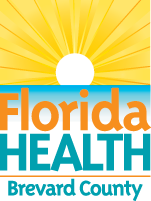It's a New Day in Public Health.
The Florida Department of Health works to protect, promote, and improve the health of all people in Florida through integrated state, county, and community efforts.
Florida Department of Health in Brevard County Issues Risks to Water Supply due to Storm
September 10, 2017

September 10, 2017
Florida Department of Health in Brevard County Issues Risks to Water Supply due to Storm
Contact:
ESF 8 Desk
(321) 637-6675
Rockledge, Fla. — Heavy rainfall from storms, or hurricane, especially if accompanied by a tidal surge or flooding, can contaminate the public water supply. Drinking contaminated water may cause illness. Individuals cannot assume that the water in the hurricane-affected area is safe to drink.
In the area hit by a storm, or hurricane, water treatment plants may not be operating. Even if they are operating, storm damage and flooding can contaminate water lines. Listen for public announcements about the safety of the municipal water supply.
If your well has been flooded, it needs to be tested and disinfected after the storm passes and the floodwaters recede.
WATER FOR DRINKING AND COOKING
Safe drinking water includes bottled, boiled or treated water. Here are some general rules concerning water for drinking and cooking. Remember:
- Do not use contaminated water to wash dishes, brush your teeth, wash and preparefood or make ice.
- If you use bottled water, know where it came from. Otherwise, water should be boiled or treated before use. Drink only bottled, boiled or treated water until your supply is tested and deemed safe.
- Boiling water kills harmful bacteria and parasites. Bringing water to a rolling boil for 1 minute will kill infectious organisms (germs).
- Water may be treated with chlorine by mixing eight drops (1/8 teaspoon; about the size of a dime) of unscented, ordinary household chlorine bleach (4-6 percent active ingredients) per gallon of water. Mix the solution thoroughly, and let stand for about 30 minutes. Use a container that has a cap or cover for disinfecting and storing water to be used for drinking. This will prevent contamination. However, this treatment will not kill parasitic organisms that may have entered a flooded well. Iodine or other disinfection tablets available at sporting goods stores may also be used.
Containers for water should be rinsed with a bleach solution before reusing them (one tablespoon bleach per gallon of water). Use water storage tanks and other types of containers with caution. For example, fire truck storage tanks as well as previously used cans or bottles may be contaminated with microbes or chemicals. Do not rely on untested devices for decontaminating water.
For more Boil Water Notice Information please visit:www.brevardeh.com or the following sites:
- Industry Bulletin for Florida’s Food Industry – These procedures must be observed while a“Boil Water Notice” is in effect:Guidelines for Food Facility Boil Water Guidance
- Guidelines for the issuance of precautionary Boil Water Notices
- CDCBoil Water Advisories Guidelines
HOW DO I DISINFECT MY WELL?
It is important to disinfect both well and plumbing water with unscented household bleach to ensure that all infectious agents are destroyed. If you have water treatment devices, remove all membranes, cartridges, and filters and replace them after the chlorination process is completed. The amount of chlorine determines the length of time you allow the bleach to remain in your system.
DOH recommends the following steps to disinfect a contaminated well:
- If the water is discoloredbefore adding the bleach, run the water until it is clear for upto 10 minutes.
- Turn off and then drainyour hot water heater— bleach is not effective in water above 105 degrees.
- Remove and replacecharcoal filters after the disinfecting process is completed.
- To avoid adding contaminationto the well during disinfection, clean the work area around the top of the well. Then remove grease and mineral deposits from accessible parts of the well head and flush the outside surfaces with 1/2 cup of unscented household bleach in 5 gallons of water.
- Turn off the pump.Remove the cap or the well plug on the rubber seal. There are many types of well caps and plugs. If you have questions, you should contact a licensed well driller. If you have a submersible pump, you may also want to contact a licensed well driller for advice on disinfection procedures.
Try to coat the sides of the casing as you pour in one gallon of unscented household bleach (4-8.28% strength). If you get chlorine on the pump or wiring, flush it thoroughly with fresh water to prevent later corrosion.
- Re-cap or plug the wellopening and wait 30 minutes.
- Turn on and, if needed, re-prime the pump.Open all of the faucets on the system one at a time. Allow the water to run until there is a noticeable smell of bleach. You may also want to flush the toilets. If you have outside faucets, you may want to direct the water away from sensitive plants. If you cannot detect a bleach odor, repeat the disinfecting process.
- Turn off all of the faucetsand allow the bleach to remain in the system for at least eight hours.
- Backwash water softeners, sand filters, and iron removal filters with bleach water.
- Again, open all the faucetsand run the water until there is no bleach smell—for up to 15 minutes.
Disinfecting your well procedure is provided by the Department of Health at: https://www.floridahealth.gov/environmental-health/private-well-testing/_documents/Flooded_Well_Broc.pdf.
IS IT SAFE NOW?
The only way to verify that the water is safe to drink is to have it tested. Although chlorine bleach is effective against microorganisms, it will not remove chemical contamination that may have gotten into your well. Contact the Florida Department of Health in Brevard County for sampling instructions to get your water tested.
For more information, please contact The Florida Department of Health in Brevard County atwww.brevardeh.com or visitwww.floridahealth.gov orwww.floridadisaster.org.




Connect with DOH